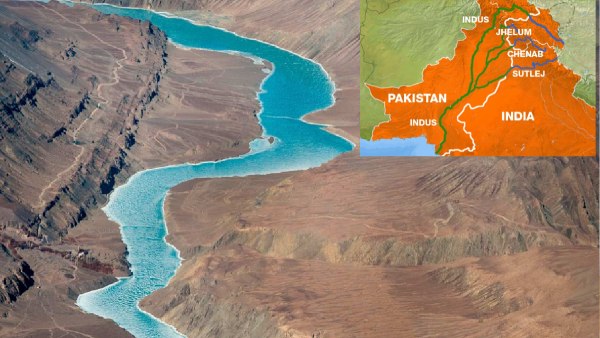The Indus Water Treaty (IWT), signed in 1960 under the auspices of the World Bank, stands as one of the most enduring agreements of transboundary water governance. It delineates the rights and obligations of India and Pakistan over the Indus River system, serving as a lifeline for millions across both nations. Under the treaty, Pakistan was accorded primary control over the western rivers—Indus, Jhelum, and Chenab—while India retained rights over the eastern rivers—Ravi, Beas, and Sutlej. Within the treaty’s prescribed parameters, India is also allowed limited use of the western rivers for non-consumptive purposes, including hydropower generation.
Over the decades, India has made steady progress in harnessing this allowance. It has successfully commissioned 10 hydropower projects on these rivers, generating a combined capacity of 3,360 megawatts (MW). Furthermore, an additional five large-scale projects, with a total capacity of 3,052 MW, are under construction. However, these developments have not been without controversy. Pakistan has consistently raised objections to the design features of several projects, including the Ratle (850 MW) and Kishanganga (330 MW) hydroelectric power projects, alleging violations of the treaty’s design criteria. Despite these objections, the projects have proceeded, highlighting India’s determination to exploit its hydropower potential in the contested regions of Jammu and Kashmir.
India’s journey toward hydropower development in the Himalayan region has been fraught with challenges. For instance, the 390 MW Dul Hasti project took an arduous 22 years to complete, despite the absence of objections from Pakistan. Similarly, the world-renowned 330 MW Kishanganga Hydroelectric Project took 11 years to complete at a staggering cost of $864 million, translating to an estimated $2.6 million per megawatt—arguably one of the highest in the world. Beyond cost overruns and delays, the projects have faced substantial obstacles from the fragile Himalayan geology, environmental concerns, and social opposition.
The Himalayas, renowned for their ecological significance, are particularly prone to geological instability. Hydropower projects in this region have frequently triggered landslides, flash floods, and other environmental disruptions. The Ratle hydropower project serves as a grim example; approximately 75 hectares of forest land were allocated for its construction, leading to irreversible changes in the ecosystem. Such instances underscore the Himalayan region’s vulnerability to extensive infrastructural development.
Disasters linked to hydropower projects are not uncommon. In 2021, an avalanche in Uttarakhand destroyed two hydroelectric projects, including the 520-MW Tapovan Vishnugad hydroelectricity project, claiming over 200 lives. In 2023, a cloudburst-induced flash flood caused extensive damage to the 100 MW Malana II project in Himachal Pradesh, while a glacial lake outburst flood breached the 1,200 MW Teesta III dam in Sikkim. These events have amplified calls for a reassessment of hydropower strategies, especially in an era when alternative renewable energy sources are becoming increasingly viable.
The pursuit of hydropower in the Himalayas has had profound consequences for the environment. The Indian Ministry of Environment, Forest, and Climate Change has acknowledged that the Himalayan region is a climate change regulator. Yet, the proliferation of hydropower projects has exacerbated environmental fragility, disrupted ecosystems, and altered monsoon patterns across South Asia. The monsoon, once predictable, has become erratic and extreme, shifting its trajectory from the northwest to the southwest—a phenomenon attributed to climate change and uneven development in the Himalayas.
Studies by credible institutions, including the Indian Meteorological Department, have highlighted a significant reduction in rainfall and snowfall in the watersheds of rivers forming the Indus system. This has resulted in declining water flows in key reservoirs like Bhakra Dam, Pong Dam, and Ranjit Sagar Dam, which irrigate vast swathes of East Punjab, Haryana, and Rajasthan. Despite controlling the watershed of the Indus River system, India has paradoxically issued notices to Pakistan to revise the IWT, citing climate change impacts—an argument that exposes inconsistencies in its approach to water management.
The financial implications of reduced water flows are immense. For Pakistan, the loss of over 25 million acre-feet (MAF) of water over the years from the Indus system translates to an economic cost of approximately $37.5 billion per year, based on an estimated $1.5 billion per MAF. This water scarcity exacerbates agricultural challenges and deepens the economic strain on a nation already grappling with water insecurity.
India’s focus on hydropower as a strategic and economic tool raises pertinent questions. Hydropower tariffs for projects like the Pakal Dul (1,000 MW), Ratle (850 MW), and Kiru (624 MW) are too higher than those for solar and wind energy. With solar and wind tariffs plummeting in recent years, India possesses ample opportunities to diversify its energy portfolio. In Jammu and Kashmir alone, solar and wind resources could meet regional energy demands for the next two centuries. Moreover, the state’s transmission and distribution (T&D) losses, which exceed 50%, underscore the inefficiency of relying on scattered households for hydropower consumption. Transitioning to solar and wind energy could provide a cost-effective and sustainable alternative, but at the same time can decrease the T&D losses.
The era of hydropower is over, as solar and wind power projects now offer significantly shorter gestation periods, lower EPC costs per megawatt, and superior capacity factor, particularly in India. Consequently, professionals in India increasingly favor solar and wind energy generation.
India’s decision to suspend the Indus Water Treaty (IWT) in pursuit of its hydropower ambitions reflects a calculated yet contentious geopolitical strategy. The remarks of Jal Shakti Minister C.R. Patil, asserting that “not even a drop of water from the Indus River will go to Pakistan,” illuminate the deliberate use of water as a lever of strategic influence—an approach that borders on economic warfare. However, this policy risks unintended domestic consequences, particularly for Indian consumers, who may ultimately bear the financial burden of costly electricity derived from hydropower, especially when more economical solar and wind alternatives remain significantly underutilised.
The ambitious plan to exploit 14,000 MW of hydropower in J&K appears to be the brainchild of a defence strategist focused on South Asian peace and geopolitics, rather than a true energy expert dedicated to protecting the fragile Himalayan ecosystem and serving the best interests of India’s power consumers.
I am confident that the vast majority of Indian engineers would agree that prioritizing renewable energy, such as solar and wind, over expensive and environmentally disruptive hydropower projects is not only prudent but also in India’s best long-term interest. This is my earnest and unwavering plea to the global community to pressure the Government of India to reconsider this dangerous course and embrace a forward-thinking strategy that abandons environmentally destructive hydropower projects, seemingly aimed at blocking water flow into Pakistan. Alongside the treaty suspension, this approach gravely risks propelling South Asia toward the brink of nuclear confrontation.
The suspension of the IWT poses grave geopolitical dangers, escalating tensions between two nuclear-armed neighbors. Global institutions like the World Bank, Asian Development Bank (ADB), International Monetary Fund (IMF), and the United Nations must intervene to mediate and urge India to prioritize climate stability and affordable electricity for the people of J&K and India at large. India must abandon hydropower projects not only in J&K but across the entire Himalayan region, as the era of hydropower is over, with cost-effective and viable alternatives like solar and wind energy now available.




